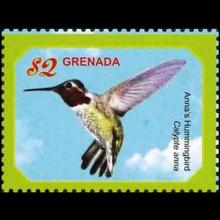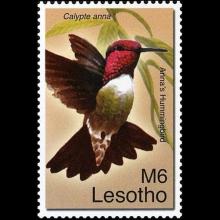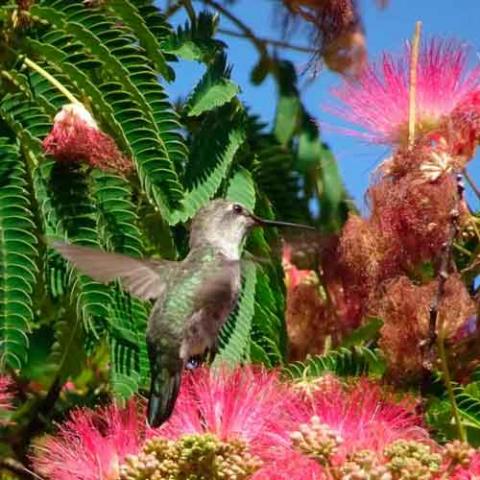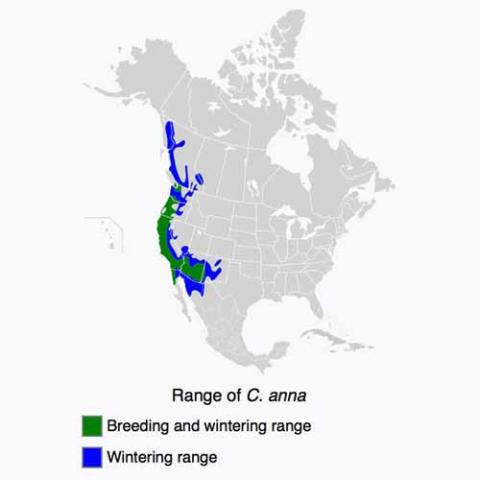NAMES
TAXONOMY
Grenada
Issued:
Stamp:
Calypte anna
Lesotho
Issued:
Stamp:
Calypte anna
Liberia
Issued:
Stamp:
Calypte anna
Grenada
Issued:
Stamp:
Calypte anna
Lesotho
Issued:
Stamp:
Calypte anna
Liberia
Issued:
Stamp:
Calypte anna
Grenada
Issued:
Stamp:
Calypte anna
Lesotho
Issued:
Stamp:
Calypte anna
Liberia
Issued:
Stamp:
Calypte anna
The Calypte anna hummingbird photo was taken during a trip to see my good friend Angus at the Sonoma Mountain Zen Center in Santa Rosa, CA.
For all you photography buffs out there, the image was shot using a Sony DSC-WX500, at a shutter speed of 1/1,000th of a second and f/6.3. The original file size is 8.15 MB.
Link to recordings of Calypte anna (Anna's hummingbird): www.xeno-canto.org
Genus species (Animalia): Calypte anna
Anna's hummingbird (Calypte anna) is a medium-sized bird species of the family Trochilidae. It was named after Anna Masséna, Duchess of Rivoli.
It is native to western coastal regions of North America. In the early 20th century, Anna's hummingbirds bred only in northern Baja California and southern California. The transplanting of exotic ornamental plants in residential areas throughout the Pacific coast and inland deserts provided expanded nectar and nesting sites, allowing the species to expand its breeding range.
Anna's hummingbird is 3.9 to 4.3 in (9.9 to 10.9 cm) long with a wingspan of 4.7 in (12 cm) and a weight range of 0.1-0.2 oz (3-6 g). It has an iridescent bronze-green back, a pale grey chest and belly, and green flanks. Its bill is long, straight, and slender. The adult male has an iridescent crimson-red derived from magenta to a reddish-pink crown and gorget, which can look dull brown or gray without direct sunlight and a dark, slightly forked tail. Females also have iridescent red gorgets, though they are usually smaller and less brilliant than the males'. Anna's is the only North American hummingbird species with a red crown. Females and juvenile males have a dull green crown, a grey throat with or without some red iridescence, a grey chest and belly, and a dark, rounded tail with white tips on the outer feathers.
These birds feed on nectar from flowers using a long extendable tongue. They also consume small insects and other arthropods caught in flight or gleaned from vegetation. A PBS documentary shows how Anna's hummingbirds eat flying insects. They aim for the flying insect, then open their beaks to capture the prey.
While collecting nectar, they also assist in plant pollination. This species sometimes consumes tree sap. The male's call is scratchy and metallic, and it perches above head-level in trees and shrubs. They are frequently seen in backyards and parks, and commonly found at feeders and flowering plants.
Anna's hummingbirds can shake their bodies 55 times per second to shed rain while in flight, or in dry weather, to remove pollen or dirt from feathers. Each twist lasts four-hundredths of a second and applies 34 times the force of gravity on the bird's head.
Locomotion
During hovering flight, Anna's hummingbirds maintain high wingbeat frequencies accomplished by their large pectoral muscles via recruitment of motor units. The pectoral muscles that power hummingbird flight are composed exclusively of fast glycolytic fibers that respond rapidly and are fatigue-resistant.
Distribution
Anna's hummingbirds are found along the western coast of North America, from southern Canada to northern Baja California, and inland to southern and central Arizona, extreme southern Nevada and southeastern Utah, and western Texas. They tend to be permanent residents within their range, and are very territorial. However, birds have been spotted far outside their range in such places as southern Alaska, Saskatchewan, New York, Florida, Louisiana, and Newfoundland.
While the species was originally restricted to the chaparral of California and Baja California, their range expanded north to Oregon, Washington, and British Columbia, and east to Arizona in the 1960s and 70s. This rapid expansion can be attributed to the widespread planting of non-native species, such as eucalyptus, as well as the use of bird feeders, in combination with the species' natural tendency for extensive postbreeding dispersal.
Anna's hummingbirds have the northernmost year-round range of any hummingbird. During cold temperatures, Anna's hummingbirds gradually gain weight during the day as they convert sugar to fat. In addition, hummingbirds with inadequate stores of body fat or insufficient plumage are able to survive periods of subfreezing weather by lowering their metabolic rate and entering a state of torpor.
The population of Anna's hummingbirds is an estimated 1.5 million, which appears to be stable, and they are not considered an endangered species. In the 2017 Vancouver Official City Bird Election, Anna's hummingbird was named the official bird of the city of Vancouver, British Columbia, Canada, where it resides year round through winter.





